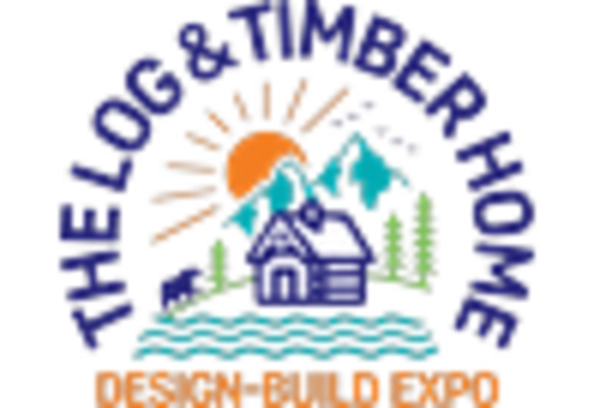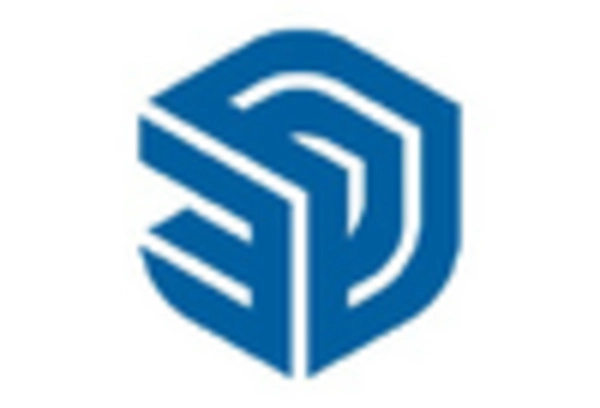Emergence of Online Design Platforms
The emergence of online design platforms is transforming the Log Home Design Software Market. With the rise of cloud-based solutions, users can now access design tools from anywhere, facilitating collaboration and flexibility. This trend is particularly appealing to small builders and individual designers who may not have the resources for traditional software installations. The convenience of online platforms is likely to attract a broader audience, potentially increasing market penetration. Furthermore, these platforms often incorporate user-friendly interfaces and tutorials, making them accessible to a wider range of users. As more professionals and enthusiasts turn to online solutions, the Log Home Design Software Market is expected to expand, driven by the demand for accessible and efficient design tools.
Rising Demand for Sustainable Housing
The increasing awareness of environmental issues appears to drive the demand for sustainable housing solutions. As consumers become more eco-conscious, the Log Home Design Software Market is likely to experience growth. Log homes, often constructed from renewable resources, align with this trend. According to recent data, the market for sustainable building materials is projected to grow at a compound annual growth rate of 10.5% over the next five years. This shift towards sustainability not only influences consumer preferences but also encourages software developers to integrate features that support eco-friendly designs. Consequently, the Log Home Design Software Market is positioned to benefit from this rising demand, as builders and architects seek tools that facilitate the creation of energy-efficient and environmentally friendly homes.
Growing Interest in Custom Home Designs
The growing interest in custom home designs is a significant driver for the Log Home Design Software Market. As more individuals seek personalized living spaces that reflect their unique tastes and lifestyles, the demand for software that facilitates custom designs is likely to rise. Recent surveys indicate that nearly 60% of homebuyers prefer custom-built homes over standard models. This trend encourages software developers to enhance their offerings, providing tools that allow for extensive customization options. The Log Home Design Software Market is thus positioned to capitalize on this trend, as builders and designers increasingly require sophisticated software solutions to meet client demands for tailored designs. This shift towards customization may lead to increased competition among software providers, further stimulating innovation and market growth.
Technological Advancements in Design Software
Technological advancements in design software are reshaping the Log Home Design Software Market. Innovations such as 3D modeling, virtual reality, and augmented reality are enhancing the design experience for architects and builders. These technologies allow for more accurate visualizations and simulations, enabling clients to better understand their projects before construction begins. The integration of Building Information Modeling (BIM) is also becoming prevalent, streamlining the design process and improving collaboration among stakeholders. As these technologies continue to evolve, they are expected to attract more users to the Log Home Design Software Market, potentially increasing market share and driving revenue growth. The ability to create detailed and interactive designs is likely to become a key differentiator in this competitive landscape.
Increased Investment in Residential Construction
Increased investment in residential construction is a pivotal factor influencing the Log Home Design Software Market. As economies recover and consumer confidence rises, there is a notable uptick in residential building projects. Data indicates that residential construction spending has seen a steady increase, with a projected growth rate of 8% annually over the next few years. This surge in construction activity creates a heightened demand for design software that can efficiently manage and execute these projects. Consequently, the Log Home Design Software Market stands to benefit from this trend, as builders and contractors seek reliable tools to streamline their design processes and enhance project outcomes. The influx of investment in residential construction is likely to drive software adoption, thereby expanding the market.


















Leave a Comment